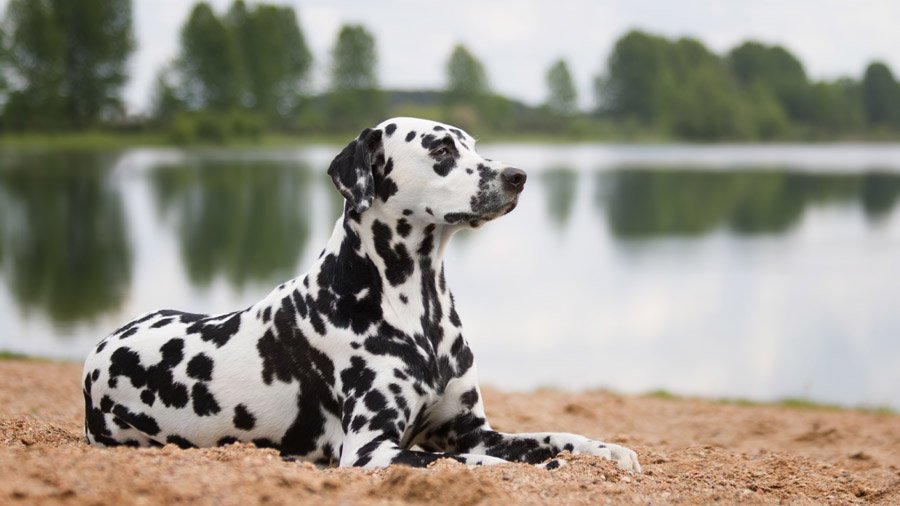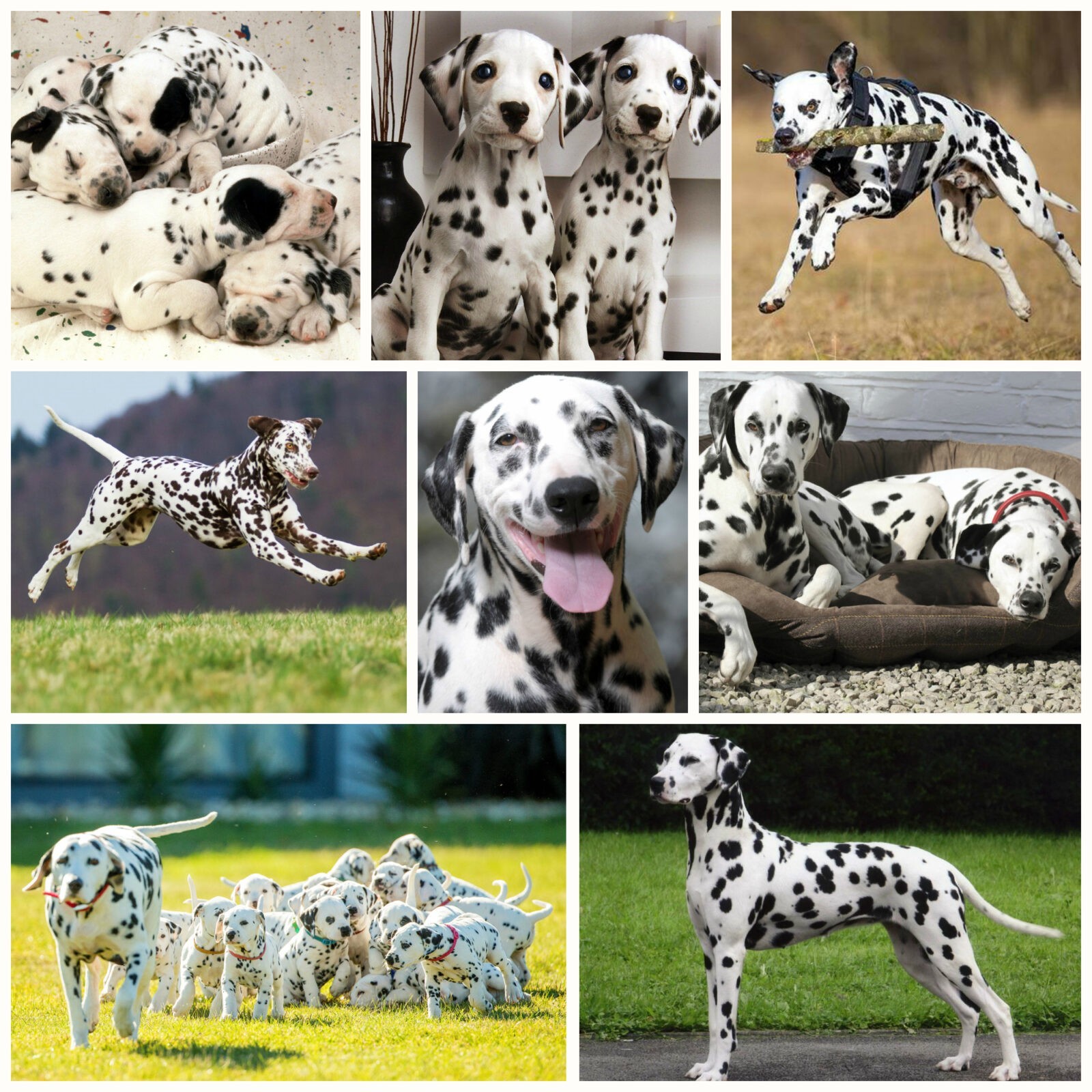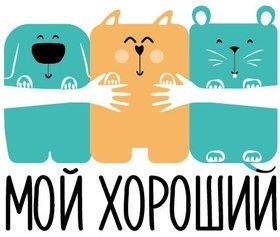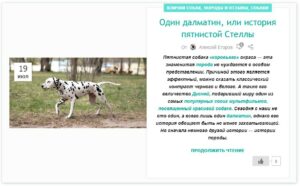Благодаря мультфильму Диснея «101 далматин» эта порода собак хорошо известна во всем мире. Ее история насчитывает ни одну сотню лет, на протяжении которых далматин был незаменимым помощником на охоте, в спасательных компаниях, в цирке… Действительно, порода по-своему уникальна. Особенности окраса далматина заметно выделяют это домашние животное среди множества других, а особенности физиологии делают их вообще удивительными собаками.

Краткое описание породы Далматин
Большинство людей выбирают этих собак за их экстравагантный внешний вид, но на самом деле, далматин подойдет не для каждого собаковода. Эти четверолапые обожают находиться в кругу семьи. Они отличные компаньоны, которые наполнены активной энергией и силой, выплескивающейся наружу. Преданность этих собак безгранична, они очень отзывчивы и благодарны.
Далматины изначально были выведены для того, чтобы бежать возле движущейся кареты аристократов, подчеркивая, таким образом, их значимость. Неудивительно, что современный далматин обожает бегать как со своим хозяином, так и в одиночку. Эта склонность привела к тому, что далматины достигают огромных успехов в различных видах спорта, особенно в аджилити. Такая физиологическая особенность домашнего любимца говорит о том, что животное нуждается в достаточных ежедневных физических упражнениях. Поэтому не стоит приобретать собаку этой породы людям, которые не являются приверженцами активного образа жизни. Если вы не любите спорт, а также не совсем готовы ежедневно по несколько часов в день бегать и прыгать с питомцем — откажитесь от своего выбора.
Если, все же, вы твердо решили приобрести далматина, то вам нужно знать, что собаки этой породы не только активны, но еще и очень умны. Они нуждаются в обучении и дрессировки с раннего возраста. Далматины могут быть немного непослушны, поэтому обучение должно быть твердым и последовательным. В то же время эти собаки очень чувствительны, поэтому негативно реагируют на агрессию, которая может проявляться со стороны хозяина во время дрессировок. Обязательно находите позитивный подход в обучении, ведь грубое обращение с питомцем — худшее, что может сделать его хозяин. Обучение — вещь непростая, поэтому новичкам лучше всего обратиться за помощью к профессиональному тренеру, который обучит вашего далматина.
Распространенная среди далматинов проблема — глухота. Часто этот недуг передается по наследству. К примеру, 20-24% щенков этой породы рождаются с патологиями слуха или уже вообще глухими на одно ухо. Американский клуб далматинов рекомендует применять эвтаназию для таких щенков. Такое решение было принято из-за того, что больные собаки часто проявляют агрессию, а значит, являются потенциально опасными. Но многие люди считают такое мнение надуманным и воспитывают щенков с глухотой, из которых вырастают преданные друзья.
Если вы всерьез задумались о приобретении щенка или взрослого далматина с проблемами слуха, следует тщательно изучить все нюансы, касающиеся содержания больной собаки.
Мочевая система далматинов уникальна в своем роде, поэтому существуют определенные требования по содержанию этой породы, выполнение которых позволит избежать различных заболеваний. Диета далматина не должна включать продукты с чрезмерным содержанием белка. Также у питомца должна быть возможность сходить в туалет сразу по первому позыву, мочевая система не должна быть перегружена. Придерживаясь таких двух простых советов можно обеспечить долгую и счастливую жизнь вашей любимой собаке.
Если далматина социализировать со щенячьего возраста, он будет отлично ладить со всеми домашними животными и маленькими детьми. Он с удовольствие играет с ребятней, но любые игры детей с животными должны проходить под строгим взором взрослых. Отметим, что далматин полон энергии и желания играться с детьми, но лучше ограничивать деток младше 6 лет от активных игр с собакой. Мускулистое тело животного может нанести, хоть и не намеренный, но вред.
Владельцы далматинов имеют прекрасную возможность принимать участие во многих спортивных кинологических соревнованиях. Собаки этой породы преуспевают в соревнованиях по выполнению различных команд, также далматины успешны в беге.
Эти собачки обожают пешие прогулки, лазание по ухабам и холмам. Если вы тщательно ухаживаете за внешним видом собаки, то, в дополнение ко всему, сможете поучаствовать в различных выставках.
Вне зависимости от того, содержите ли вы далматина в качестве собаки — компаньона, или же с целью участия в спортивных состязаниях, или же просто так, в любом случае, эта собака станет отличным дополнением к вашей семье.
Основная информация
| Название породы: | Далматин |
| Страна происхождения: | Хорватия (Далмация) |
| Время зарождения породы: | точно неизвестно |
| Тип: | гончие и родственные породы |
| Вес: | 24 – 32 кг |
| Рост (высота в холке): | 54 – 62 см |
| Продолжительность жизни: | 10 – 13 лет |
|
Классификация МКФ:
|
Группа 6, Секция 3, Номер 153 |
| Цена щенков: | 130 – 450 $ |
| Самые популярные клички: | список кличек для далматина |
Оценка характеристик породы Далматин
| Адаптивность
(определение, означающее, насколько легко собака может приспосабливаться к изменениям в жизни) |
🐶🐶🐶🐶🐶 |
| Уровень линьки
(Уровень и частота выпадения волос у животного) |
🐶🐶🐶🐶🐶 |
| Уровень нежности
(Уровень и количество нежности и ласки, которую собака отдает взамен на внимание к себе) |
🐶🐶🐶🐶🐶 |
| Потребности в упражнениях
(Уровень дневной активности собаки) |
🐶🐶🐶🐶🐶 |
| Социальная потребность
(Необходимое количество контактов собаки с другими животными, а также людьми) |
🐶🐶🐶🐶🐶 |
| Квартирное содержание
(Фактор, определяющий уровень шума и иных неудобств, которые собака может доставлять хозяевам в соотношении размера квартиры к размеру собаки) |
🐶 |
| Груминг
(Количество купаний, расчесываний, а также необходимое количество сеансов профессионального груминга, необходимого собаке) |
🐶 |
| Дружелюбность в незнакомой среде
(Особенности поведения собаки в обществе с незнакомыми людьми или в незнакомой обстановке) |
🐶🐶🐶 |
| Тенденция к лаю
(Склонность к лаю и его частоте и громкости) |
🐶🐶🐶 |
| Вопросы здоровья
(Потенциальный уровень состояния здоровья собаки) |
🐶🐶🐶🐶 |
| Территориальность
(Склонность собаки к защите своего дома, двора или даже автомобиля хозяина) |
🐶🐶🐶 |
| Дружелюбность к котам
(Тенденция к терпимости к кошкам и пониженное проявление охотничьих инстинктов) |
🐶🐶🐶 |
| Интеллект
(Способность собаки к мышлению и решению возникающих трудностей (не стоит путать с обучаемостью!) |
🐶🐶🐶🐶🐶 |
| Воспитание и дрессировка
(Уровень сложности в обучении собаки выполнять определенные действия) |
🐶🐶🐶🐶🐶 |
| Дружелюбность к детям
(Фактор, определяющий насколько собака дружелюбна к детям, любит ли она с ними играть и терпеть некоторые детские шалости) |
🐶🐶🐶🐶🐶 |
| Игровая активность
(Понятие определяется самим его названием, и, как правило, встречается почти у всех собак) |
🐶🐶🐶🐶🐶 |
| Наблюдательность
(Способность собаки определить присутствие чужого на своей территории) |
🐶🐶🐶 |
| Дружелюбность к другим собакам
(Склонность собаки находить общий язык с другими своими сородичами) |
🐶🐶🐶🐶🐶 |
Далматин фото:

История происхождения
Точная история происхождения далматинов неизвестна. Но достоверно установлено, что некие пятнистые собаки были неизменными спутниками кочующих цыган, но конкретное место и время происхождения породы установить не удалось.
Свое название эта порода получила во время появления современных далматинов в провинции Далмация на восточном берегу Адриатического моря, где на сегодняшний день располагается Хорватия.
Далматинов использовали для различных работ во время всей их многовековой истории, так что трудно выделить какое-то одно главное призвание этих пятнистых собак. К примеру, их активно использовали в качестве сторожевых собак, также они помогали пастухам, выступали в цирке и т.д.
Англичане несколько усовершенствовали породу. Селекционеры постарались вывести собаку, которая бы могла неустанно бегать на длительные расстояния вместе с лошадьми, запряженными в упряжки с каретой. Также далматины охраняли лошадей и кучера, когда те отдыхали.
Характер далматина
Содержание и уход
Далматины, несмотря на наличие светлого окраса, относятся к очень чистоплотным собакам. Причиной тому уникальные свойства шерсти, которая хорошо отталкивает грязь. Эти собаки также не выделяют неприятного запаха, что указывает на отсутствие необходимости частого купания. Достаточно будет купания всего лишь несколько раз в год. Частое купание недопустимо еще и по причине опасности удаления полезных масел, которые способствуют чистоте шерсти.
Собаки этой породы сильно линяют. Владельцу придется вычесывать питомца каждый день. Правильный уход за Далматином избавит от неприятного появления шерсти в доме. Обязательным является еженедельный тщательный осмотр ушей на предмет раздражений или воспалений. Обрабатывают уши специальным раствором, назначенным ветеринаром. При обработке следует избегать использования ватных тампонов, лучше взять тампон из мягкой ткани. Регулярные чистки зубов позволят избежать возникновения зубного камня и неприятного запах изо рта.
Если далматины не стирает когти в процессе прогулок на улице, то их придется обрезать самостоятельно по мере необходимости. Лучше всего приучать домашнего любимца к этой процедуре с раннего возраста. Тогда собака не будет сопротивляться, а проводить подстригание когтей будет намного проще.
Дрессировка и обучение
Здоровье и болезни
Несколько интересных фактов
- Далматины нуждаются в ежедневных активных упражнениях. Иначе им станет скучно, что приведет к плохому поведению животного.
- Собаки этой породы склонны к линьке, поэтому необходимо часто вычесывать шерсть.
- Далматины нуждаются в раннем обучении и социализации. Они могут упрямствовать, поэтому в обучении нужно проявлять настойчивость и последовательность. Кроме того, ранняя социализация – гарантия того, что собака подружиться со всеми другими домашними животными.
- Эти пятнистые собаки ненавидят одиночество. Они обожают находиться в кругу семьи и участвовать во всех семейных мероприятиях, спать и жить там, где живет хозяин.
- Мультфильм Диснея «101 далматин» привел к популяризации этой породы, что стало причиной недобросовестного поведения некоторых заводчиков, которые реализуют больных и слабых щенков.
- Если вы хотите быть владельцем здоровой собаки, то обращайтесь исключительно к проверенным собаководам и заводчикам, или же воспользуйтесь советами своих хороших знакомых.
Питомники и заводчики
Материал мы заимствовали с замечательного сайта наших партнеров DOGCATFAN.COM о кошках и собаках, автор dogcatfan

